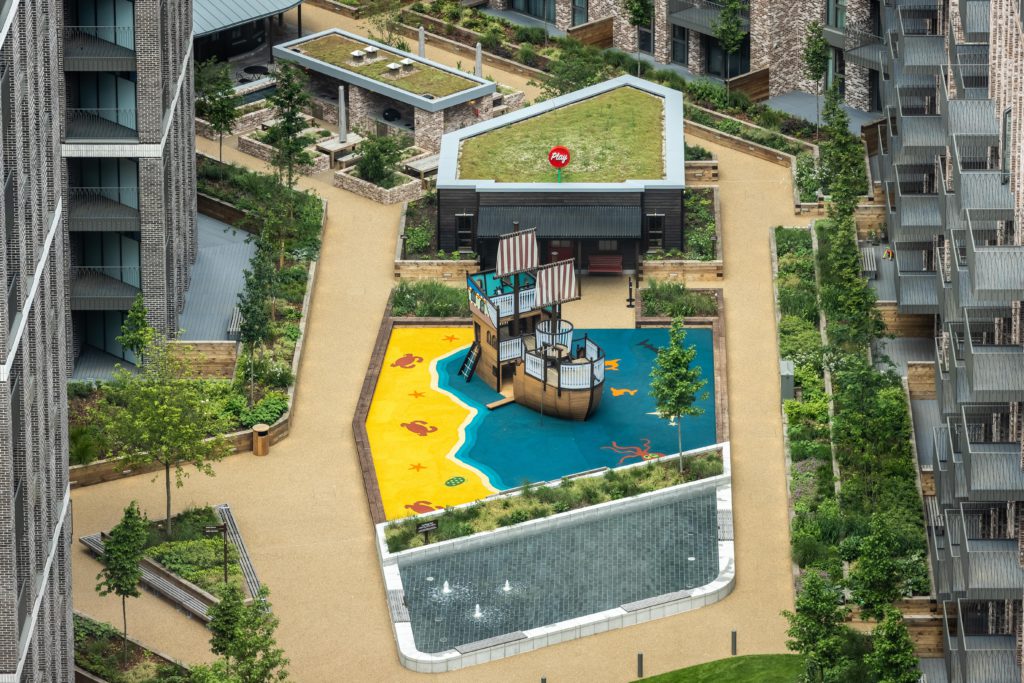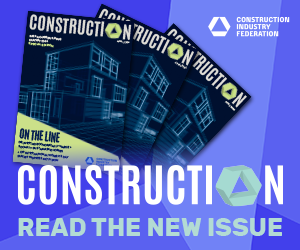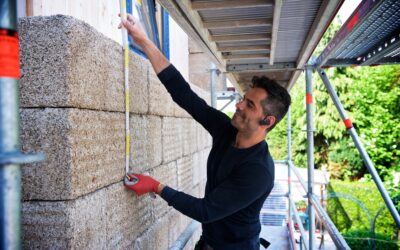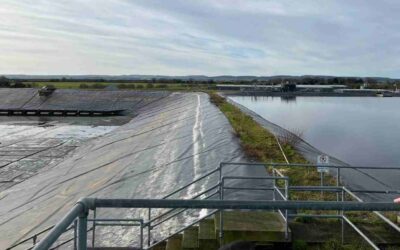Sarah-Jane Pisciotti is Head of Design, Ireland & Europe at Sisk Group. She considers what our future homes might look like post-pandemic and how her career path led to construction
How has the pandemic changed our homes?
The pandemic has shifted hearts and minds away from exclusive consideration of internal spaces to equal consideration of external and communal spaces. It is no longer acceptable to have insufficient or uninspiring play space for children, little access to bio-diversity or a sense of escape into nature. I live in an apartment with two young children and without that sense of escape, which millions globally did not have, the pandemic would have been unbearable. The lack of nature and local amenity is one of the reasons we have a mental health epidemic. We need to change ingrained thinking and fast. Designers and end users are ready for change. Now councils, investors and developers need to work together to meaningfully demonstrate their people-centric values. We know we need cleverly integrated home working spaces and flexibility of layout in generously proportioned houses and apartments that adapt as families grow.
What do you think the ‘home of the future’ will look like?
It is vital they meet the zero carbon objectives of the Paris Agreement and Ireland’s Climate Action and Low Carbon Development Bill. We are starting to see viable hybrid forms of construction internationally and of these, Cross Laminated Timber (CLT) would be the construction choice of my home of the future. Whether factory built off-site from wood or hybrid modular components, this home will be fully powered from renewable energy sources, intelligently managed via sensors and mobile devices and connected to the Internet of Things (IoT). A generous apartment that supports well-being with lots of light, excellent amenity space plus connectivity with public transportation is a must. I lived and studied in Denmark and we need only look to the redeveloped docklands of Aarhus for inspiration on sustainable communities and reimagined financial models for social and affordable housing.
What is your approach to technology?
At Sisk our Digital Project Delivery (DPD) approach puts the use of innovative technology at the heart of our design and construction processes. We drive the use of BIM from 3D to 4D, 5D and 6D. This enables better collaboration in a shared model, elimination of risk at design stage through clash detection, a digital rehearsal of the construction process, efficient cost planning with 5D, plus asset management with Digital Twins. We offer the tangible benefits of technology across the whole project lifecycle, it’s cutting edge. This approach, paired with our on-site use of drones, holographic technology and experimentation in robotics has put us at the forefront of innovation.
What are the biggest challenges to design?
The future global threats are the opportunities that are driving innovation in design today. The mega trends we see affecting design most prominently are climate change, digitisation, industrialisation of the construction process and social change, including the skills shortage. These opportunities require collaboration across the value chain, not siloed working. Designers that address these challenges by welcoming and valuing the contribution of main contractors and suppliers early in the process will drive significant benefits for the end user and clients. We have expert knowledge of Modern Methods of Construction, planning and logistics as well as whole-life carbon measurement tools to help inform design decision-making and get it right first time.
Who’s doing great work?
It’s the design studios that have a strategic digital transformation plan, a robust sustainability strategy and critical design delivery skills who will be best placed to drive design innovation. For really cutting-edge design that changes how we build, like Design for Manufacture & Assembly (DfMA), we need to look internationally. Companies headquartered in the UK and mainland Europe are leading in this space with a platform approach to designing with a ‘kit of parts’ that are modelled exactly how they will be constructed, using a Digital Twin approach and harnessing the benefits of Modern Methods of Construction (MMC). The recent trend here of decreasing designer accountability, driven in part by the insurance market and skills gap (due to the recession and a decade of emigration) is hampering progress.

Pisciotti believes councils, investors and developers need to work together to meaningfully demonstrate their people-centric values. Pictured is Quintain Living – Canada Gardens social spaces. Photography: Chris Winter/Quintain Living
What is the Sisk approach to homebuilding?
We are passionate about playing our part in resolving the housing emergency Ireland faces, particularly for economically disadvantaged groups. To this end, Sisk Living focusses on building for local councils and our portfolio is largely social and affordable housing. Our approach to maintaining cost-effectiveness, quality and speedy delivery paired with a sustainable approach, is to build as much as possible off-site. Our sister company VisionBuilt manufactures light gauge steel sections which are then formed into 2D panelised systems. We develop the design to integrate MMC such as bathroom pods, modular utility rooms and plug and play mechanical and electrical systems.
What attracted you to architecture, design and construction?
My first love was drawing, the second science. Designing buildings seemed the perfect marriage of both. Architecture was attractive in its breadth and depth; aside from design it covers history and theory, sustainability, maths and physics, contract law, technical detailing, collaboration, and critical judgement. As an architect I was happiest on site, inspecting the works and debating solutions to tricky problems 1:1 with the builder. When I built my first project, a house in London, the builder offered me a job, which surprised me, but led me to consider construction as a career option more meaningfully.
What was your path into the industry?
Following graduation from UCD I worked as an architect in Italy, Ireland and London. London was my home for the best part of a decade, and while studying there for my part 3 architecture qualification, my final assignment was to reflect on the part that architects can play in society and in industry. I concluded that to make the positive changes I wanted to see, I would need to be able to influence decision making. Suspecting that experience at the ‘coalface’ of a construction business would give me a deeper understanding, I left architecture and shortly afterward joined a leading Main Contractor in London. It was a risk to leave behind a great career in architecture and one I’m proud to have taken.

The pandemic will be a catalyst for change when it comes to how we build and live in our homes. Pictured is Sisk’s Eastern Lands in Wembley Park, London.
Would you encourage women to consider a career in construction?
Yes! The honest question is, why not? I have not come across a single role in the last 13 years that could not have equally been performed by a female. The industry is begging for diversity and we are witnessing the emergence of new roles in our business including engineers turned data strategists, DfMA design managers and digital integration professionals – the future is off-site. I have so many wonderful colleagues and friends I have made in construction, it has enriched my life experience and I have no idea what the future will bring. What’s not to like?
How have your experiences working internationally influenced your work?
In London there was a high concentration of innovative practices and businesses driving design and construction thought leadership. I was fortunate to live that experience. Working internationally also deepened my appreciation of diversity. The team I have now built at Sisk reflects this in that we have experience across continents with broad disciplinary backgrounds, a diverse age profile and crucially, gender balance. Everyone has a voice. In Italy I worked for an innovative designer whose company places research and development at the heart of their business. Back in 2008 they presented at the Venice Biennale the concept for a zero carbon, €100,000 house for a local council that sold electricity back to the grid, was customisable, built using sustainable materials and intelligent. That experience fuelled in me a passion for sustainable buildings and communities. Happily, these same values underpin the work Sisk does today as we rise to the challenge of creating a zero-carbon construction industry by 2050.

![Sarah-JanePisciotti-Option2[3881]](https://constructionmagazine.ie/wp-content/uploads/2021/08/Sarah-JanePisciotti-Option23881-scaled.jpg)






